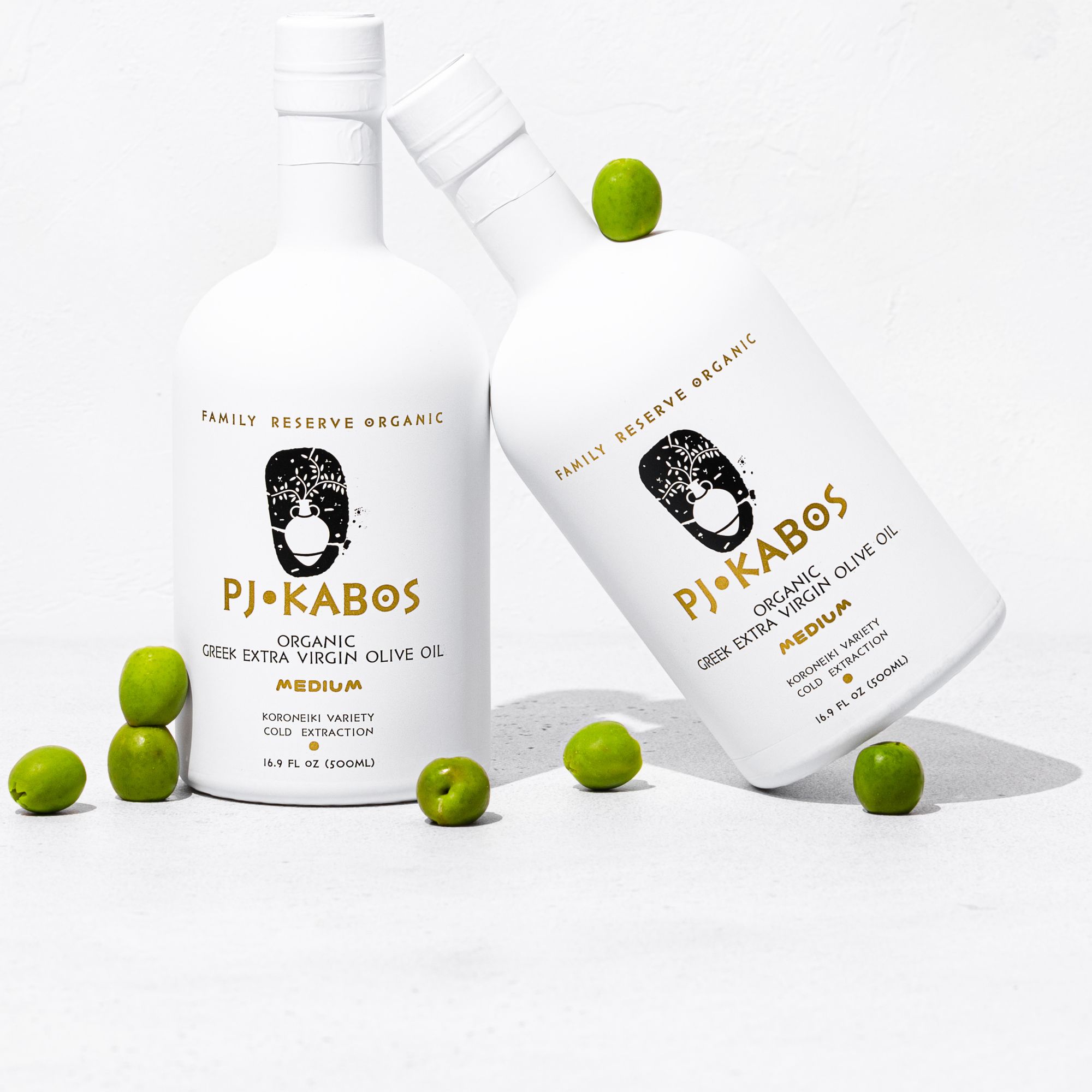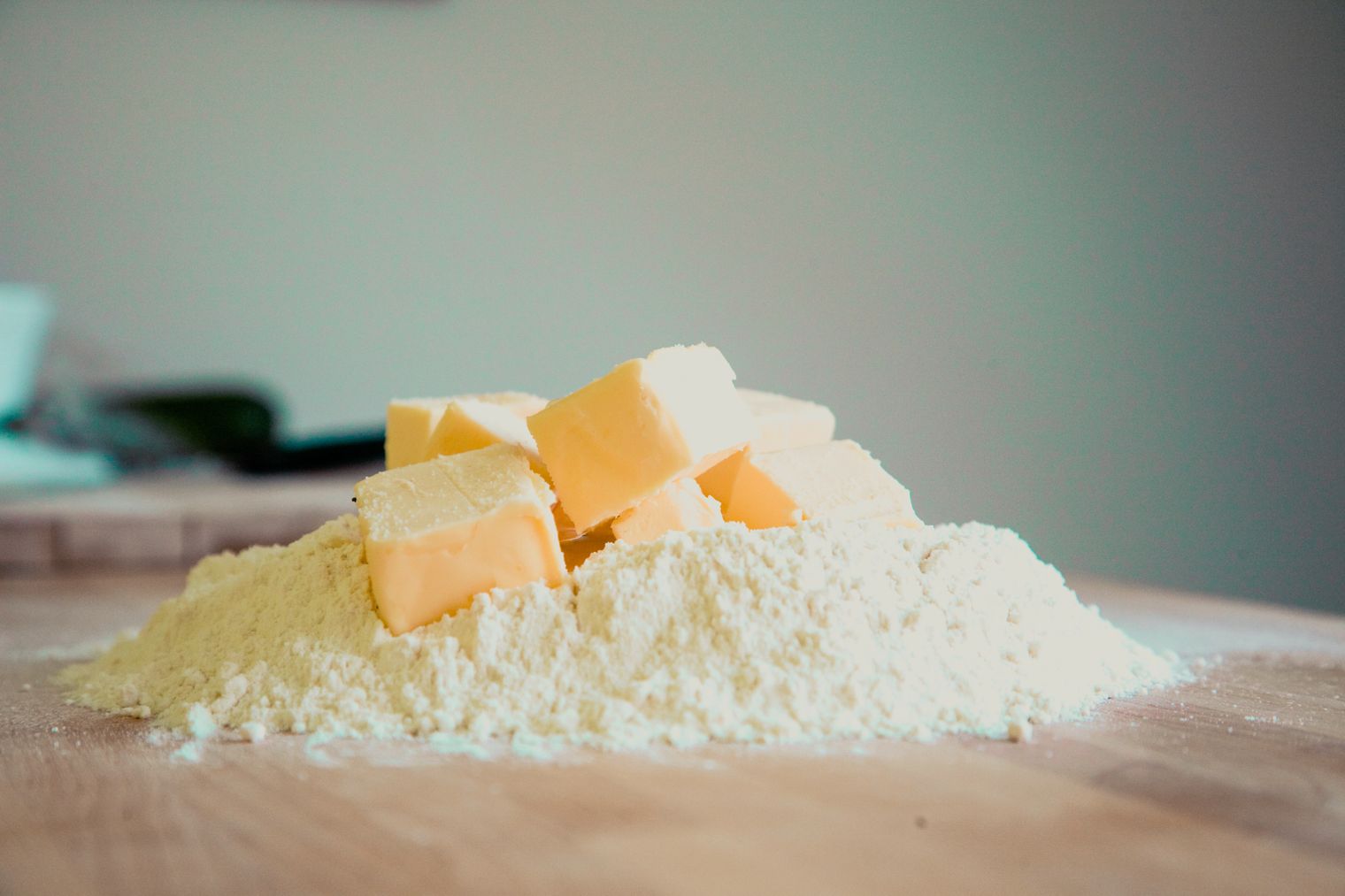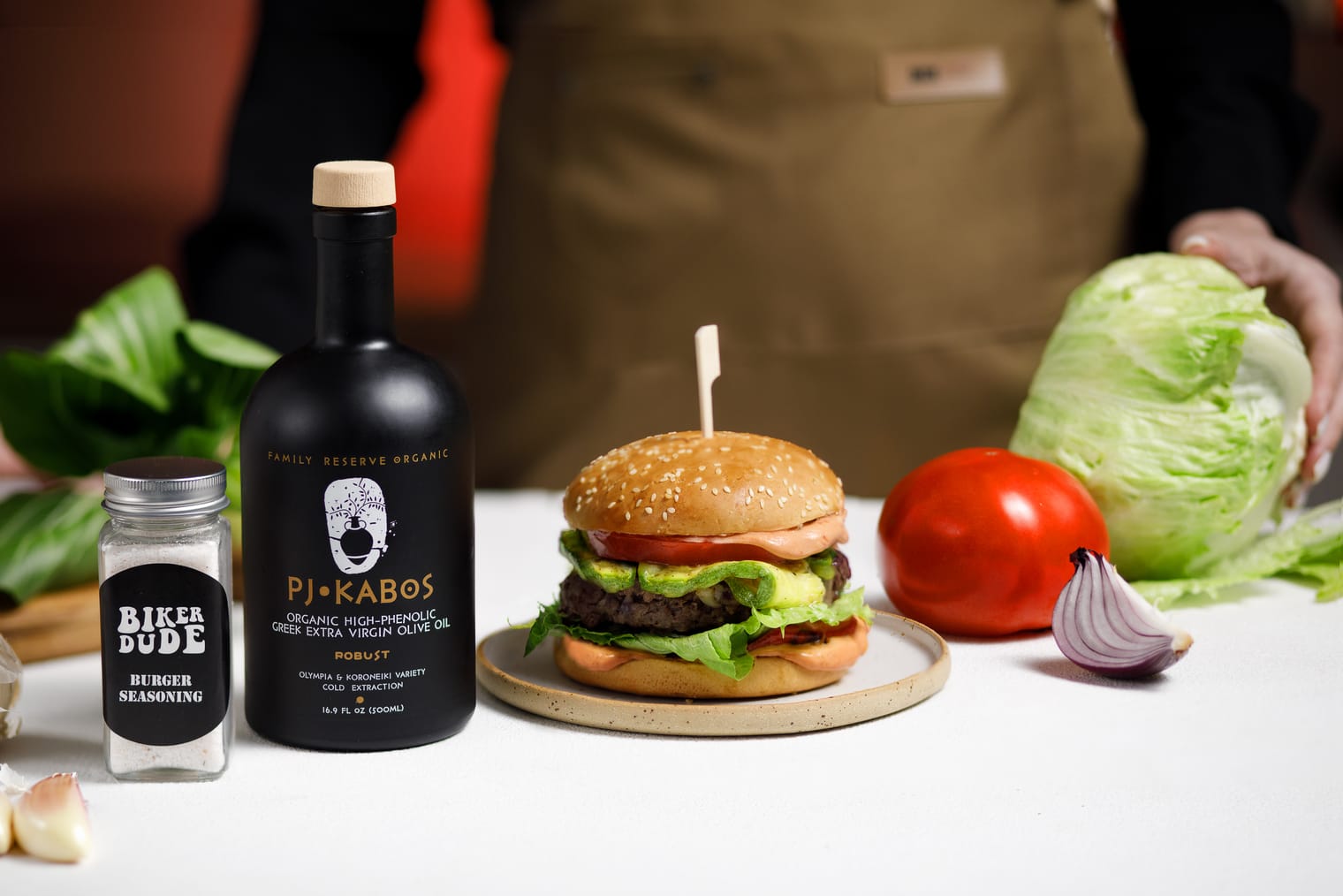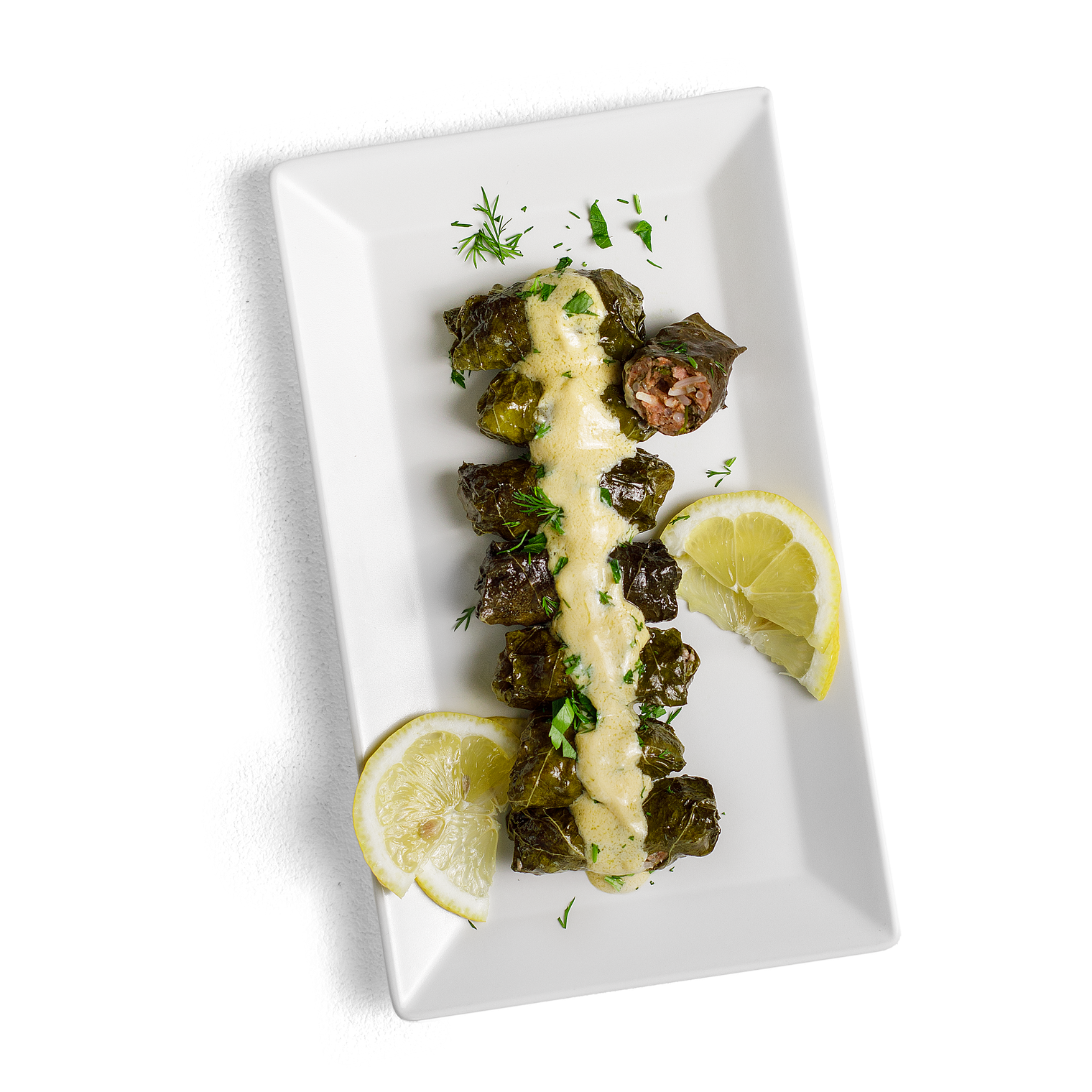Substituting olive oil in place of other cooking fats in your diet is a no-brainer when it comes to boosting health—and using olive oil as a butter substitute is no exception.
In its simplest form, extra virgin and virgin olive oil is made by grinding and mixing olives into a paste, separating the solids (or pomace) from the liquid oil, and then filtering the oil. This yields a flavorful oil that’s rich in monounsaturated fats (MUFAs) and polyphenol compounds that may help improve cholesterol, reduce risk of heart disease, and more. (Regular, pure, and light olive oil are slightly more processed and subtle in flavor, but still pack a healthy dose of heart-healthy, anti-inflammatory monounsaturated fats).
Butter, on the other hand, is made by churning cream to separate fat molecules or globules from the buttermilk. Some milk solids remain with the butterfat, giving it a creamy, rich flavor. Butter works wonderfully in many recipes—especially baked goods—but it’s quite high in saturated fat, so you may not want to make it your go-to cooking fat.
The really good news: Olive oil is great for cooking, baking, and frying—and it can be used in place of butter in almost all circumstances. As an added bonus, studies show that replacing sources of saturated fat in the diet, like butter, with monounsaturated fats from olive oil is associated with reduced risk of coronary heart disease.
Butter To Olive Oil Conversion
You can almost always substitute olive oil for butter if you know the right conversion. But in some instances—say, you’re frying up an egg in olive oil instead of butter—it makes more sense to just “eyeball it.” When you need to be more precise, though, you should typically use 3 parts olive oil for every 4 parts butter or margarine. With this conversion, the cooking time and temperature should remain the same.
Below is a list of common butter-to-olive oil conversions for your reference:
When Can You Substitute Olive Oil For Butter?
Olive oil is a fantastic substitute for butter in most circumstances, whether that’s frying up an egg, searing steaks, using in a batch of cookies, or even for making a creamy alfredo sauce. Just keep in mind, the type of olive oil you choose will influence the final flavor of your recipe. For a stronger, more robust flavor, choose extra virgin olive oil for your recipes. For a more neutral flavor, go for regular (a.k.a. pure olive oil) or light olive oil. (Here, learn more about cooking with extra virgin olive oil.)
It might seem surprising, but olive oil works really well in many baked goods, too. Olive oil is actually pretty common in traditional Mediterranean staples like biscotti, olive bread, and focaccia, but it can also be substituted for butter in cookies, moist/dense cakes (e.g. chocolate cake, gingerbread cake, fruit cake), brownies, muffins, banana bread, zucchini bread, and more.
When Can’t You Substitute Olive Oil For Butter?
Olive oil isn’t always a perfect substitute for butter, though.
Olive oil is not ideal for replacing butter in pie crusts or pastries, since cold butter is really the only thing that will create those pockets of fat in your pastry dough that yield lovely, flaky layers once baked. Your end result with olive oil will be more crumbly and brittle, but—on the plus side—it should still taste pretty good. If you really want to try olive oil in a pie crust, it’s best to seek out an olive oil pie crust recipe rather than trying to tweak a traditional crust recipe.
Olive oil isn't a suitable butter substitute for frostings or light, delicate baked goods like sponge cakes either. As a good general rule: Whenever a recipe calls for “creaming butter and sugar” with a mixer—as is often the case with these recipes—you should pass on olive oil. “Creaming” dissolves sugar in butter and aerates the mixture, which then lends a light and fluffy texture to cakes and frostings. Liquid oils, however, don’t become aerated when mixed with sugar, so they can cause delicate cakes to fall flat and frostings to be runny.
Product placement
PJ KABOS 'Family Reserve Organic - Medium'
High Phenolic and 2022 Gold-Award Winner.
Declared as 'One of the World's Best Olive Oils'.
Click here to shop.





